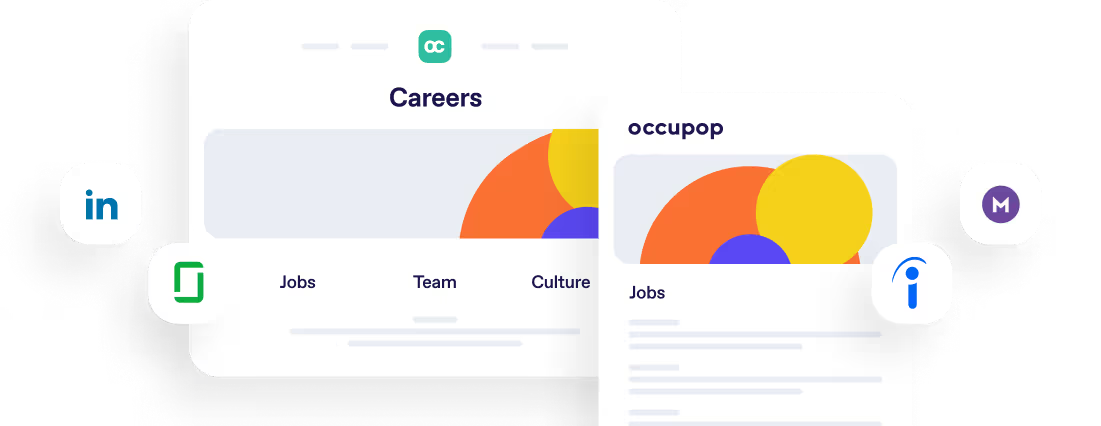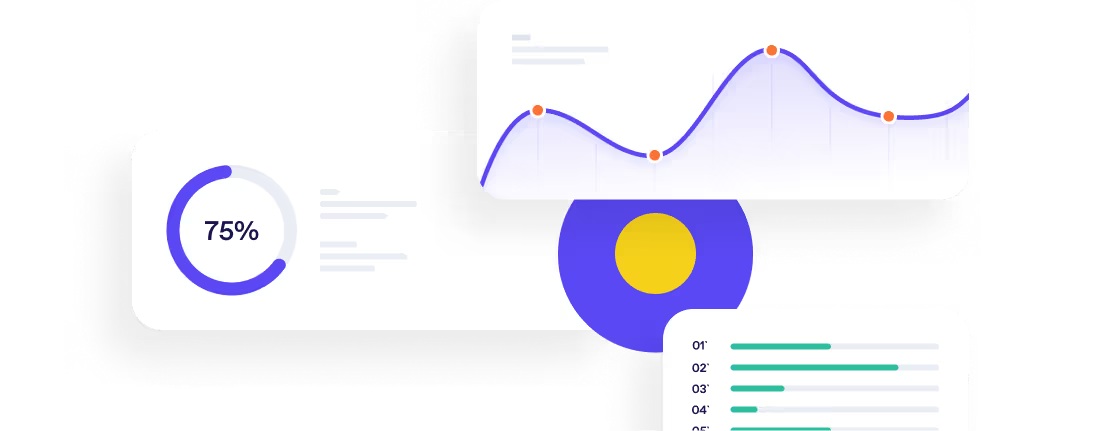Driving Efficiency: How to Reduce Your Company’s Average Cost Per Hire



The prevalence of layoffs and hiring freezes, especially in the tech sector, suggests that professionals are likely to stay in their current roles and postpone job exploration until the economic conditions improve. Despite the challenging economic climate, companies must be prepared to restart their recruitment efforts and get prepared to attract talent in a changing world, the talent who can help them achieve their growth goals.
In this environment, reducing the average cost per hire is more crucial than ever, as organisations have tightened their budgets amid the ongoing market downturn. The average cost per hire (CPH) emerges as a pivotal metric in this endeavor. By strategically managing your CPH, you can make substantial savings while still attracting and hiring the best candidates for your organisation. In this comprehensive guide, we shall delve into the strategies and tactics that can assist you in reducing your company's CPH. Whether you're a hiring manager or a Talent Acquisition (TA) leader, these insights are crafted to enhance your recruitment practices and, ultimately, boost your bottom line.
The Significance of Lowering Recruitment Costs
Understanding the Cost per Hire (CPH) Formula
Before we plunge into the specifics of decreasing CPH, let's establish a clear understanding of what it involves. The CPH formula is quite straightforward: it entails the total sum of both internal and external recruiting costs divided by the total number of hires made within a specified period, usually analysed monthly. This formula lays the foundation for comprehending the financial implications of your recruitment processes. Below, we dissect the elements contributing to your company's CPH.

Internal and External Expenses
Both internal and external costs are associated with your Talent Acquisition (TA) strategy, collectively influencing your CPH. Internal costs may encompass everything from the time spent by your internal team on recruitment activities to expenses such as relocation costs for new employees, which have a significant impact on your organisation's overall CPH.
On the external front, you'll encounter various expenses, including agency fees and travel costs linked to attending on-campus recruitment events, job fairs, and other in-person gatherings where job seekers convene. Recognise that these costs can accumulate over time, potentially inflating your CPH.
Negative Ramifications of High CPH
Failing to consistently reduce your CPH can result in several adverse consequences for your organisation:
- Resource Wastage: A high CPH implies spending more money than necessary to hire talent, diverting valuable resources from other areas of your TA strategy.
- Inefficient Tools: Investment in recruiting tools that do not yield productive results can be detrimental to your time and budget. For instance, spending time sourcing candidates on job boards and career communities that historically in your organisation do not lead to high-quality hires is an inefficient use of resources.
- Unproven Processes: The use of an unproven Recruitment Process Outsourcing (RPO) firm can lead to wasted time and financial resources, especially if their methods do not align with your hiring objectives.

Lowering Your Company's Average Cost Per Hire (CPH)
Now that we've explored the significance of managing your CPH, let's delve into strategies to help you effectively reduce your average cost per hire.
1) Be Transparent About Offered Pay for Active Roles
Attracting the right candidates is a pivotal aspect of reducing CPH. One effective strategy is to be transparent about the pay offered for active roles. Here's why this approach is important:
- Higher-Quality Applicants: Candidates are better informed and can make more accurate decisions about whether a role aligns with their expectations when you disclose salary ranges. This transparency leads to higher-quality applicants and potentially a higher quantity of them, reducing the time spent sourcing and accelerating the hiring process.
- Stand Out: In a competitive job market, providing salary information helps your job listings stand out. Job seekers are often drawn to postings that provide clear compensation details.
- Time to Fill: Speeding up the hiring process, as candidates have a clearer understanding of what's on offer, contributes to a reduced CPH. Research indicates that job seekers pay close attention to compensation when deciding whether to apply for a role.
2) Assess the Output of Your TA Technology and External Recruitment Vendors
The tools and partnerships you choose for your recruitment process significantly impact your CPH. It's essential to assess their effectiveness.
Evaluating Your Talent Acquisition Technology
Legacy Applicant Tracking System (ATS) software can be a culprit in maintaining high CPH averages. These systems often have outdated database structures and lack advanced candidate relationship management (CRM) features. On the other hand, modern and easy-to-use ATS systems like Occupop provide native sourcing, nurturing, interviewing, automation, and analytics capabilities that streamline the recruiting process.
By optimising the back-end work and allowing your recruiters to focus on high-value work like the candidate experience and nurturing, you can accelerate the hiring process, reducing your CPH.
Innovative technologies have revolutionised the recruitment industry, offering various tools and platforms that can help you streamline your hiring process and reduce costs. Here are some advanced strategies for harnessing the power of technology this year:
- AI and Machine Learning: These technologies can assist in candidate sourcing, screening, and matching. AI-driven algorithms can identify the best-fit candidates faster, reducing the time it takes to fill a position and ultimately reducing your cost per hire.
- Video Interviews: Conducting initial interviews via video can save time and resources, especially for remote or international candidates. It eliminates the need for candidates to travel and allows for more flexibility in scheduling interviews.
- ChatGPT in Recruitment: Similar to having your own ai-virtual assistant we have compiled a library of ChatGPT Prompts for recruitment available here.

Assessing Your External Recruitment Agencies or Recruitment Process Outsourcing (RPO) Firms
Different types of external Recruitment Agencies or RPOs specialise in specific industries or hiring needs, such as high-volume hiring for manufacturers or executive hires for enterprise organisations. To reduce your CPH, you must select the right agency or RPO vendor for your company's headcount needs and growth objectives. Conduct a comprehensive evaluation by considering the following criteria:
- Industry Specialisation: Does the external agency or RPO firm specialise in your industry or the specific roles you need to fill?
- Scalability: Can the external agency or RPO firm accommodate your company's growth plans?
- Track Record: Review their past performance and success stories in reducing CPH.
- Compatibility: Ensure that the agency or RPO firm aligns with your talent team's current capacity and recruitment goals.
- Cost-Effectiveness: Evaluate whether the cost of the RPO service is justified by the savings in CPH.
Above all else if you regularly engage with external agencies, job boards, or other vendors in your recruitment efforts, contract negotiation should be on your list of activities this year. As a key decision-maker in the hiring process, you have the power to discuss terms, pricing, and service levels with your vendors. By doing so, you can reduce your recruitment costs and ensure that you're getting the best value for your investment.
3) Prioritise Hiring Analytics in Your TA Strategy
Analytics have become indispensable in making informed, data-driven decisions. When it comes to reducing CPH, merging your recruitment and HR analytics into a single source of truth can be a game-changer. In the world of recruitment, it is essential to track and analyse your recruitment data meticulously. By closely monitoring your recruitment metrics, you can identify inefficiencies and areas where you can reduce costs. Start by assessing the performance of your current hiring processes. Are there stages in your recruitment funnel that are more costly than others? Are there any specific job boards or sourcing channels that consistently yield better results? Gathering and analysing this data can help you make informed decisions and allocate your resources more efficiently.

Benefits of Data-Driven Decision-Making
Data-driven decision-making provides several benefits for your TA strategy:
- Bias-Free Decisions: Using data eliminates subjective biases and ensures impartial assessments of candidates.
- Efficiency: Analysing all elements of your recruiting efforts helps optimise your processes and reduce costs.
- Measurable Goals: You can set and track measurable goals related to CPH and overall recruitment efficiency.
- Tangible Outcomes: A data-driven approach helps you achieve tangible goals, including driving down your CPH.
Implementing Advanced Analytics
Integrating advanced analytics into your TA strategy involves utilising sophisticated software solutions like Occupop. These platforms offer comprehensive out of the box analytics that enable talent leaders, operations managers, and specialists to monitor the progress of key recruiting metrics. By accumulating data with the intent of making data-driven decisions, you can significantly impact your CPH.
insert-cta
Discover BBF Limited's Remarkable Recruitment Cost Reduction with Occupop
With a workforce of over 2,000 individuals, BBF Limited holds a significant presence in the competitive food manufacturing industry. Their growth strategy is anchored in aligning their employer brand strategy with an engaging candidate journey, and they recognised the need for a recruitment solution that could support these objectives effectively. Before embracing Occupop, BBF Limited encountered significant challenges that hampered their recruitment efforts. These included the absence of job board integration and an overall lack of organisation, which led to manual and time-consuming processes.
The implementation of Occupop delivered tangible results for BBF Limited, bringing about a significant transformation in their recruitment processes and delivering substantial benefits. A compelling result was the significant reduction in recruitment costs. By streamlining their processes and leveraging the capabilities of Occupop, BBF Limited realised annual cost savings amounting to approximately £350,000 when compared to the pre-Occupop era, during which they lacked a dedicated Applicant Tracking System (ATS).
Beyond these cost savings and efficiency improvements, BBF Limited reaped additional benefits, including an enhanced candidate experience, heightened employer brand visibility, and the establishment of a central hub for all their recruitment activities. Occupop's robust analytics and reporting capabilities provided a deeper understanding of hiring success, while its remote hiring solution proved invaluable during challenging times. Read the full case study here.

In Conclusion
Reducing your company's average cost per hire is not just about cutting expenses; it's about optimising your recruitment process to attract the best talent efficiently. By being transparent about pay, assessing your technology and partnerships, and implementing advanced analytics, you can make substantial savings while enhancing the quality of your hires. Whether you're a hiring manager or a TA leader, these strategies are your key to a more cost-efficient and successful hiring process. Embrace the power of data, and you'll find your recruitment efforts more effective, streamlined, and budget-friendly.
Are you ready to make the change and reduce your company's average cost per hire? Implement a more cost-efficient recruiting approach with Occupop, a beautifully simple ATS designed for small and mid-sized businesses. Chat with the Occupop team today and take it for a test drive with a free, access all areas, 14 day trial.
INSERt-line
Summary Points
Managing your Cost per Hire: Key Takeaways
- Managing CPH is vital for savings and attracting top talent.
- CPH formula involves internal and external costs.
- High CPH results in wasted resources and inefficient tools.
- Strategies include pay transparency, technology assessment, and analytics prioritisation.
- Transparent pay offers attract high-quality candidates.
- Advanced ATS systems streamline the process and reduce CPH.
- Choose RPO firms carefully to match your needs.
- Data-driven decisions are essential for efficient recruitment.
- CPH management is a fundamental aspect of cost-effective and successful hiring.
Simple. Beautiful.
Recruitment Software.
HR updates sent straight to your inbox
You might also like...


Manage your entire hiring process simply, from engagement to management, hiring and onboarding







Simple. Beautiful.
Recruitment Software.
Recruitment Software.






